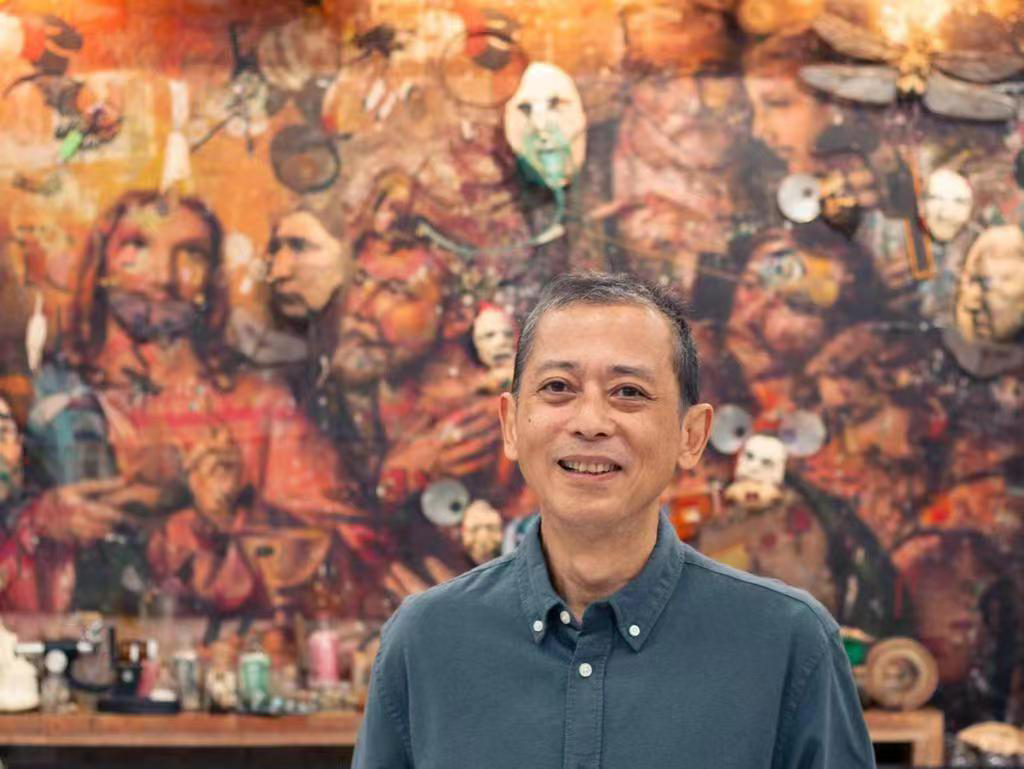蜻蜓船琵琶(Tutubing Hegalong),结合了北方他加洛语单词tutubi和南方原住民T'Boli单词hegalong。Tutubi的意思是蜻蜓,而Hegalong是一种传统的双弦乐器,也被称为船琵琶。船琵琶的特点是其独特的木船形船体,带有线条标记作装饰,不仅在菲律宾的南棉兰老岛,而且在东南亚的许多海洋文化中都能找到。
该作品的灵感来自于强烈的地方感,一个不断演变的栖息地,充满了昆虫和鸟类声音的宝丰湿地公园,坐落在昆明的滇池水线上。这种象征了长了翅膀的船琵琶,将由铝复合材料和玻璃纤维制成,将漂浮并锚定在公园入口和出口附近的百合池塘上,在动力学上与潮汐的上升和下降以及不断变化的风况相互作用的同时,让水中产生的涟漪来标记它的存在。这种传统船琵琶音乐的物体表示也补充了丰富的鸟类和昆虫声音,标志着该地方的健康转变和蜕变。
就像水中宁芙(希腊神话中的精灵)的生命周期,后来变成长了翅膀准备飞行的昆虫,Tutubing Hegalong庆祝了土地、水和空气相互连线的栖息地的变化和转变。这种蜕变也呼应了滇池曾经受严重污染的水域及其以前作为工业区的历史的持续恢复和再生。
船只和有翅膀的船只让人联想到运动和流动性,来自菲律宾的这种有翅膀的Hegalong象征了一个及时的机会,加强与云南省不同原住民群体及展示其在东南亚留下的共同文化遗产。
The Tutubing Hegalong or Dragonfly Boat-Lute, combines the Northern Tagalog word tutubi and the Southern Indigenous T’Boli word hegalong. Tutubi means Dragonfly while the Hegalong is the name a traditional 2-stringed musical instrument also known as a Boat Lute. Boat Lutes are characterized by their unique wooden boat-like body with decorative linear markings and are mostly found not only in the Southern Island of Mindanao in the Philippines but also in many maritime cultures in South East Asia.
The work is inspired by a strong sense of place, an evolving habitat teeming with the sounds of insect and birdlife of Baofeng Wetland Park, nestled along the waterline of Dianchi Lake. This symbolic winged-hegalong, which will be fabricated in aluminium composite and fiberglass will be floated and anchored on the lily pond near the entrance and exit points of the park, kinetically interacting with the rising and lowering of the tides and changing wind condition as it creates ripples in the water to mark its presence. This object representation of music from that of the traditional hegalong also complements the rich abundance of bird and insect sound, signaling the healthy transformation and metamorphosis of the site.
Like the life-cycle of a water-borne nymph, later changing into an insect with wings ready to take flight, the Tutubing Hegalong celebrates the process of change and the transformation on this habitat where land, water, and air become interconnected. This metamorphosis also echoes the continuing rehabilitation and regeneration of a once heavily-polluted waters of Dianchi Lake and its previous history as an industrial area.
Boats and winged vessels conjure a sense of movement and mobility and the symbolic journey of this winged-Hegalong from the Philippines is also a timely opportunity to strengthen historical and cultural connection with the diverse indigenous groups of Yunnan Province and its shared cultural heritage across South East Asia.

在1981-1985年间在菲律宾大学修读绘画,及后在西澳大利亚州视觉艺术学院、西澳大利亚州表演艺术学院与及在西澳大利亚州伊迪丝·考恩大学(1997-1999)学习绘画。他从学生时代便在菲律宾艺术高中开始了他的早期创作实践,后来更在母校担任了视觉艺术教师。他对探索创意游戏、即兴创作和协作小组"创意巴延尼汉"工作感兴趣,他发起了实验性混合媒体绘画、雕塑、装置、影子木偶戏、影片和表演之间的创作项目。自1995年移民到澳大利亚后,他探索关于记忆、流动性、跨文化对话/交流、社群合作以及不同文化之间来回交流的经验,研究这些互动如何改变思维方式。透过对殖民化、移民和文化全球化等相互交织主题的沉浸式探索,他继续开发编织个人、社会、文化和环境的艺术项目。Reamillo是1996年美国佛蒙特州工作室中心弗曼亚洲艺术家基金会奖学金和1994年菲律宾文化中心十三位艺术家奖的获得者。
2023年12月,Alwin Reamillo因病离世,剩下的工作,由艺术家Gary Santiago Rojas制作完成。
“Alwin是一位真正的艺术家,一位自由的精神,一颗永远闪烁的星星。”
—— Reamillo夫人
“Alwin was a true artist, a free spirit, a star glittering forever.”
—— Mrs. Reamillo
Alwin Reamillo studied Painting at the University of the Philippines (1981-1985) and the WA School of Visual Arts, WA Academy of Performing Arts, Edith Cowan University in Western Australia (1997-99). He began his early creative practice as a former student and later as visual arts teacher at the Philippine High School for the Arts. Interested in exploration of creative play, improvisation and collaborative group work "creative bayanihan", he had initiated collaborative projects that intersect between experimental mixed media painting, sculpture, installation, shadow puppetry, video and performance. After migrating to Australia in 1995, he pursued interest in exploring ideas about memory, mobility, cross-cultural dialogue /exchange, community collaboration and the experience of moving back and forth between cultures, examining how these interactions can change ways of thinking. Through immersive exploration of intertwined themes of colonization, migration and globalization of culture he continued to develop artistic projects that weave the personal, social, cultural and environmental. Reamillo was a recipient of the Freeman Foundation for Asian Artist Fellowship, Vermont Studio Center, USA 1996 and the 1994 Thirteen Artists Awards, Cultural Center of the Philippines.
In December 2023, Alwin Reamillo passed away because of illness, and the rest of the work was completed by artist Gary Santiago Rojas.